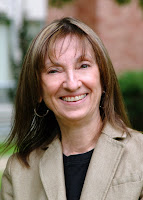Article on Why People Dance
 Dr. Helene Lawson, professor of sociology at the University of Pittsburgh at Bradford who has taken tap dance lessons for five years, wrote a paper about her experience and those of other dancers, which has been published in an arts journal from England.
Dr. Helene Lawson, professor of sociology at the University of Pittsburgh at Bradford who has taken tap dance lessons for five years, wrote a paper about her experience and those of other dancers, which has been published in an arts journal from England.Lawson’s paper, “Why Dance? The Motivations of an Unlikely Group of Dancers,” was published in the Winter 2008/2009 edition of Music and Arts in Action, which is published by the University of Exeter.
In her paper, Lawson explains that she undertook the study because she wanted to know why amateur dancers dance. She interviewed 75 adult dance students, including the dancers in her tap dance group in Bradford, and also visited private dance studios across the country, including studios in Redondo Beach, Calif., Nashville, Tenn., and Chicago, Ill.
In addition to addressing why people dance, Lawson also writes about how dancers are affected by recitals, which she said are emotional roller coasters, and why some of them eventually dropped out of class despite the benefits they originally claimed to receive from dancing.
“There is something about the feeling dancing evokes that cannot be explained,” Lawson writes, “but which needs to be addressed because it is essential to understanding why amateurs of this caliber want to dance.”
She discovered that the reasons people dance could be grouped into six categories: keeping fit, seeking stability, seeking a sense of community, seeking to capture life, seeking to free one’s spirit, and seeking a new identity.
Ellen, a health care work in Pennsylvania, told Lawson she was having trouble remembering, and in her job she was concerned about that. Dancing “would make me use my brain to think and remember,” she said.
Other dancers, Lawson discovered, danced to seek stability and relieve stress. According to Andrea, a mother of two from New York, “Family and work pressures are common sources of stress that motivate my dancing.”
For most dancers, Lawson writes, the dance class is a kind of community. Mary, a 45-year-old student from California told Lawson, “We’re a strange family of different social classes, ages and lifestyles, yet somehow the same.”
For Renita, an administrative secretary at a Pennsylvania hospital, dancing gives her freedom. “I dance because the passion of music moves me almost as needing to breathe,” she told Lawson. “I almost feel a freedom when I dance because of the cleansing of my soul from the ability to let my natural inclination to music rule.”
Several dancers, including Janis, a 55-year-old preschool teacher in Pennsylvania, said dancing gave them a new identity. Janis told Lawson she was depressed and was finding herself through dance. “I feel like I have a whole new identity. I am someone else.”
According to Lawson, “Re-examining the dancers’ motivations, I see that they experience a documented exhilaration from dancing together and especially from public performance as a troupe.”
Lawson, who has been teaching at Pitt-Bradford since 1991, is the program director of sociology and coordinator of the gender studies minor. She is the author of “Ladies on the Lot: Women, Car Sales and the Pursuit of the American Dream.” She has also published many journal articles on hair workers, conservation officers, Internet dating and is currently working on an article describing survival methods of small dairy farmers.


.jpg)
Comments